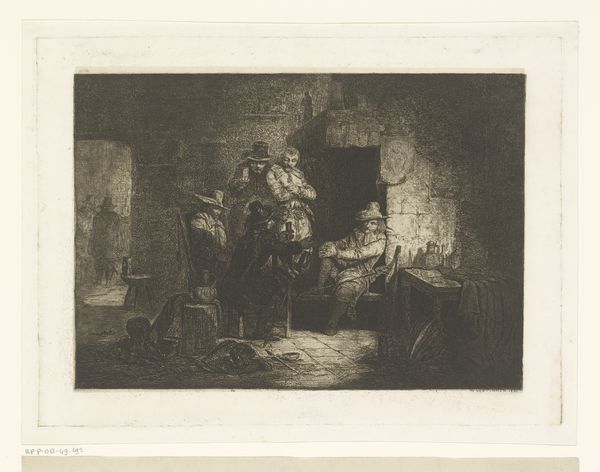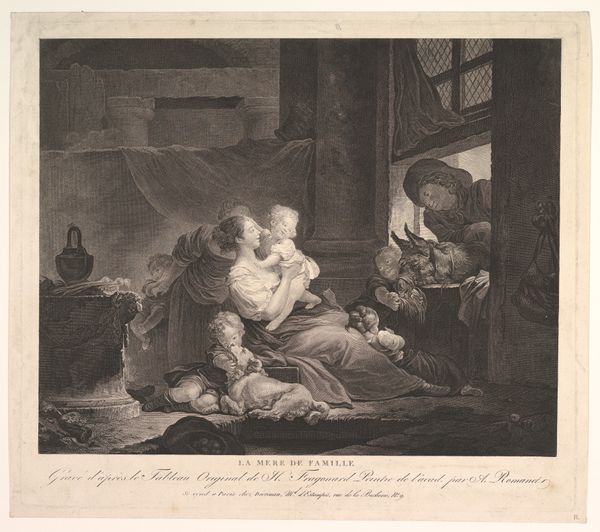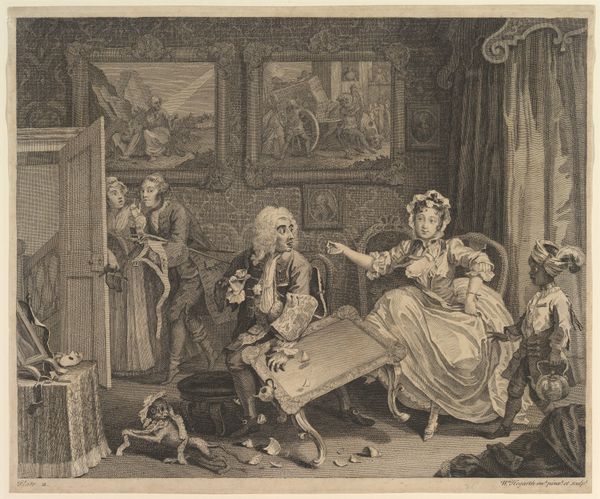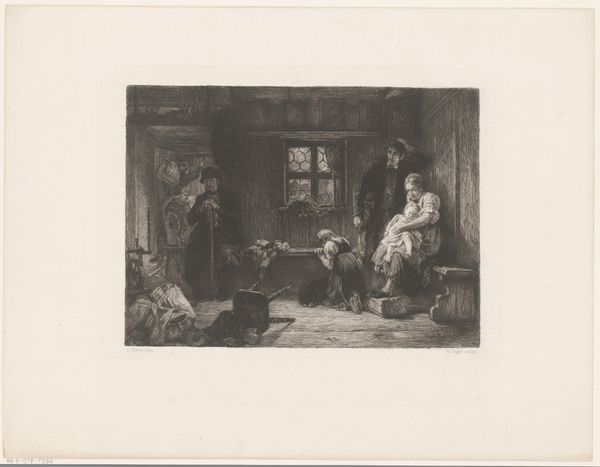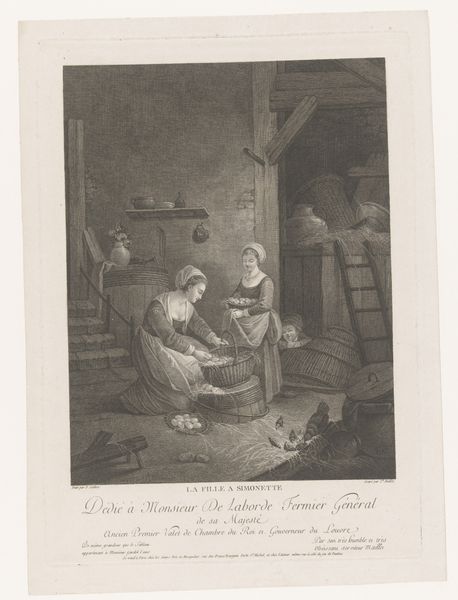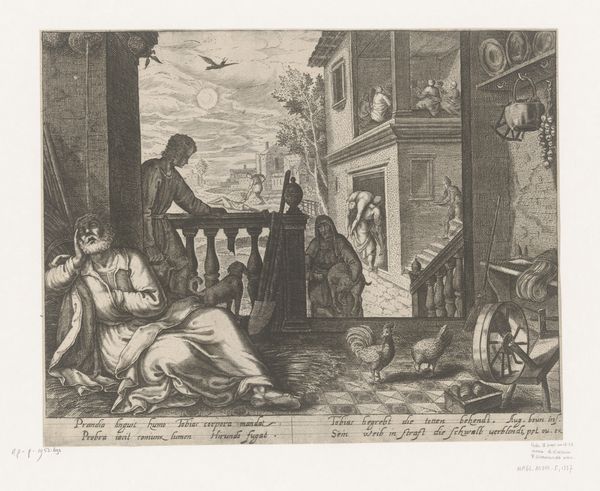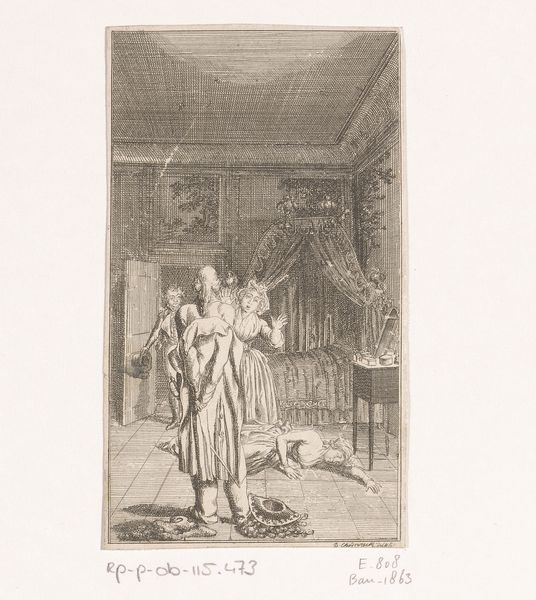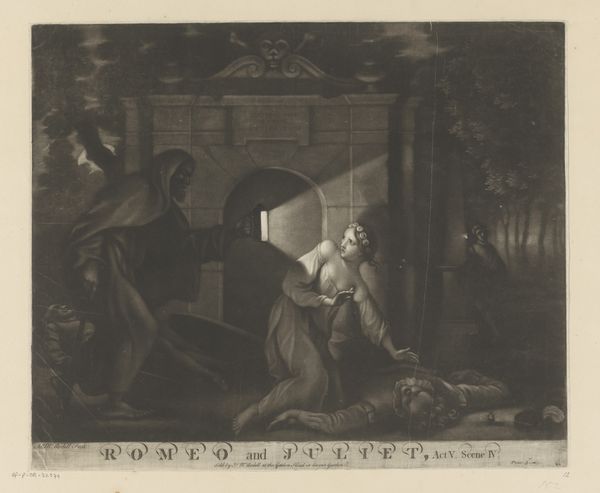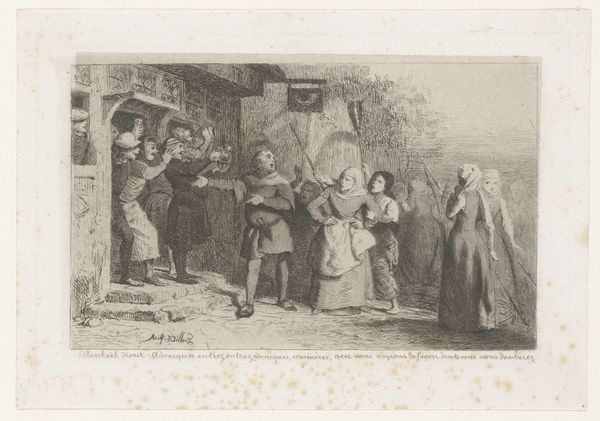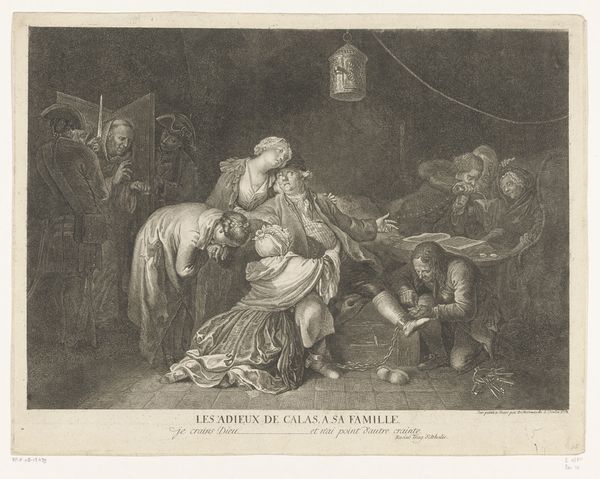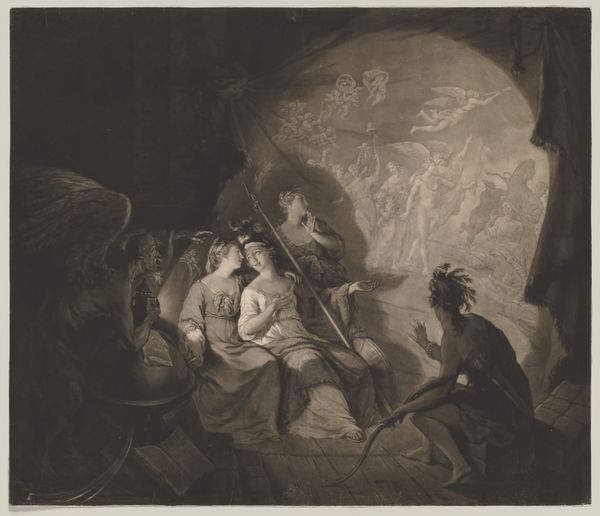
Dimensions: 478 × 590 mm (image/plate); 514 × 619 mm (sheet)
Copyright: Public Domain
Editor: Richard Earlom's "An Iron Forge," from 1773, created as an engraving, is a stark portrayal. There's a sense of hard labor, illuminated against deep shadows. How do we unpack the historical implications embedded in this scene? Curator: It's a potent image, isn't it? This work presents a crucial intersection: the burgeoning Industrial Revolution and its impact on working-class families. Consider the women huddled together – what narratives of gender and labor might be present, and largely absent, from dominant historical accounts? Editor: I hadn't thought about their vulnerability in the workforce like that. What about the contrast of light and darkness? It feels intentional. Curator: Absolutely. Think about the Enlightenment ideals of progress being forged, quite literally, in these dark, often dangerous conditions. This contrast makes visible the human cost that often underpins notions of advancement. Who benefits, and at whose expense? Editor: So, the romantic style isn't just about aesthetics; it also highlights social inequalities? Curator: Precisely. Romanticism often idealizes the past, yet works like these push us to confront the grim realities for many during that period. Notice the stooped figures; do you feel any commentary being made on the state of labour here? Editor: Now I see it. It’s not just a snapshot; it's a commentary. The drawing style brings forth details, the faces. It creates an uncanny experience of the history of labor and Romanticism. Curator: The visual culture of industry had and still has many issues; with Earlom's images we get an entryway into thinking through them in more nuanced and rigorous ways. The shadows become spaces for further questioning.
Comments
No comments
Be the first to comment and join the conversation on the ultimate creative platform.
